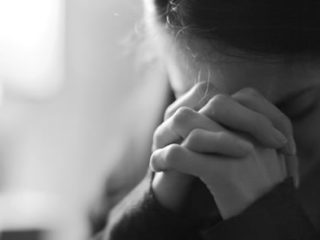Those who’ve seen Jean Louis Gerome Ferris’ painting commemorating the first Thanksgiving are likely to be misled by the artist’s rendering. The idyllic scene belies the reality that life-threatening challenges faced the Pilgrims daily. Even before their journey across the ocean began, travel guides to the New World cautioned, “First, make thy will.”
The Pilgrims landed in Massachusetts on Dec. 26, 1620. Lacking sufficient provisions and shelter for winter, most settlers became ill within weeks. Ten of 17 husbands and fathers died with the “first infection,” and of the 17 wives, only three were alive after three months. By April, more than half of the population had died of disease or famine. These bleak circumstances were punctuated by other forms of human tragedy. For example, William Bradford’s wife drowned as they disembarked from the Mayflower, leaving him a widower with a 1-year-old son.
Summer of 1621 brought a welcome reprieve from the harsh environment. The Wampanoag Indians taught the Pilgrims to plant corn because the wheat they’d brought from England wouldn’t grow in the rocky ground. The colonists also learned how to hunt and fish in their new surroundings. Yet that fall, when they gathered for their first Thanksgiving, they were aware that the trials they’d encountered were not over. In fact, a month later the settlers were restricted to half-rations. And it was several more years before this small band enjoyed lasting freedom from hunger.
As the Pilgrims grappled with hardship, how were they able to maintain the spirit of gratitude toward God that resulted in the three-day celebration we honor by our Thanksgiving holiday? What can we learn from these forefathers that will help us remain thankful in a modern-day world when discouragement, calamity and heartache invade our lives?
Trust in God’s Provision
The Pilgrims cultivated a habit of gratefulness long before they sailed to America’s shores. Traditionally, they set aside days of communal thanksgiving throughout the year to acknowledge God’s mercies and praise Him for His faithfulness. This religious practice had deeply ingrained an attitude of thankfulness that could not be shaken by life’s events. Whether expressing gratitude for everyday survival or a situation deemed the special providence of God, their trust in the Lord’s goodness and divine plan allowed them to find solace and strength to face adversity. They understood that their endeavors were of eternal consequence and drew purpose from the belief that their accomplishments were, according to the Mayflower Compact, “for the glory of God, and advancement of the Christian faith.”
What a contrast this outlook is with that of today’s culture. In a recent Barna poll, 92 percent of people responded that they are “self-sufficient.” Another survey revealed that many Americans feel the main purpose in life is personal fulfillment. Given these perspectives, it’s not surprising that individuals often feel overwhelmed by emptiness and despair when difficulties arise. Counteracting the resulting sense of hopelessness and lack of control may seem a daunting task.
However, we have the same choice that our predecessors had: We can depend entirely on ourselves, or we can turn to the Almighty for help. Knowing that a right spiritual perspective is critical when dealing with painful setbacks, Gov. John Winthrop concluded a message to his fellow settlers with Deuteronomy 30:20. Winthrop said, “For He [the Lord] is our life and our prosperity.” A thankful heart sees each day through the lens of God’s providential care.
Fellowship of Support
In addition to being bound together by faith, those who came to this new land were linked by a physical interdependence that is uncommon today. With few resources, the colonists bore one another’s burdens in a manner that we can only imagine. In view of this necessity, an essay titled A Christian Model of Charity called on the colonists to “knit together in this work as one man, . . . make one another’s condition our own, rejoice together, mourn together, labor and suffer together.” In this way, the writer said, they would “keep the unity of the Spirit.”
This bond of brotherhood was reflected by the more than 50 Pilgrims who attended the first Thanksgiving feast. The group spanned generations, from toddler Oceanus Hopkins to 53-year-old William Brewster, and hired servants to seamen.
Approximately 90 Wampanoag Indians joined the festivities as well. Although they differed greatly from the Pilgrims in culture and religious beliefs, they too valued fellowship and hospitality. Their willingness to share their food and expertise with the new arrivals had helped ensure the Pilgrims’ survival. Now the Wampanoags participated in the time of rejoicing as the settlers harvested their first crops.
There’s an old saying: “Shared joy is double joy, and shared sorrow half the sorrow.” Thanksgivings through the centuries have provided unique opportunities to express love and appreciation for others, as well as to come alongside those in need. Even on those occasions when we are hurting, we can find consolation in doing something for others. Thankfulness is multiplied as we reaffirm our sense of community and bridge our differences through Christ’s love.
The Pilgrims’ gratitude flourished against the ravages of circumstance because they held fast to their belief in a sovereign, loving Creator and found comfort and support in one another. Whether then or now, in an uncertain world, the relationships we have with God and those around us are enduring
Used With Permission.This article appeared in Focus on the Family magazine. Copyright © 2001 Focus on the Family.
[schemaapprating]










